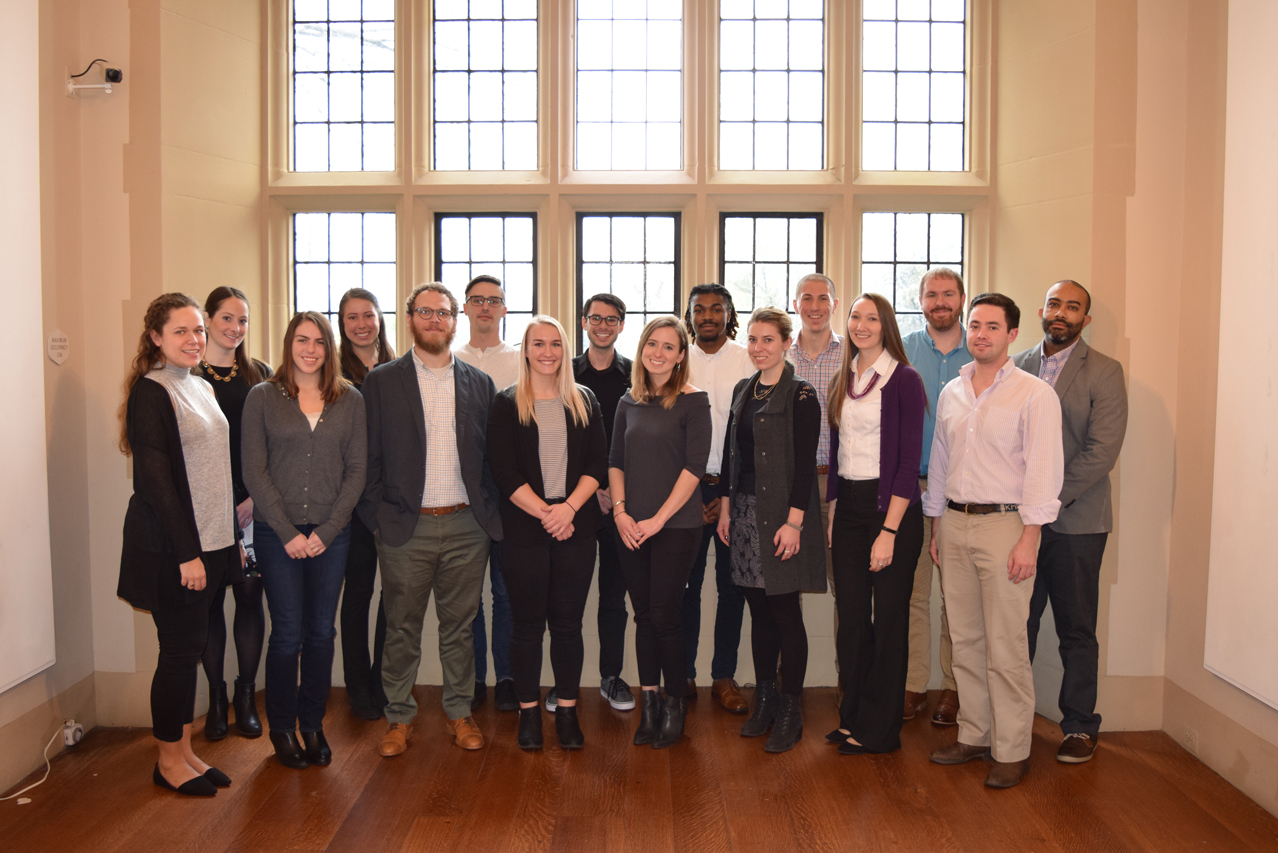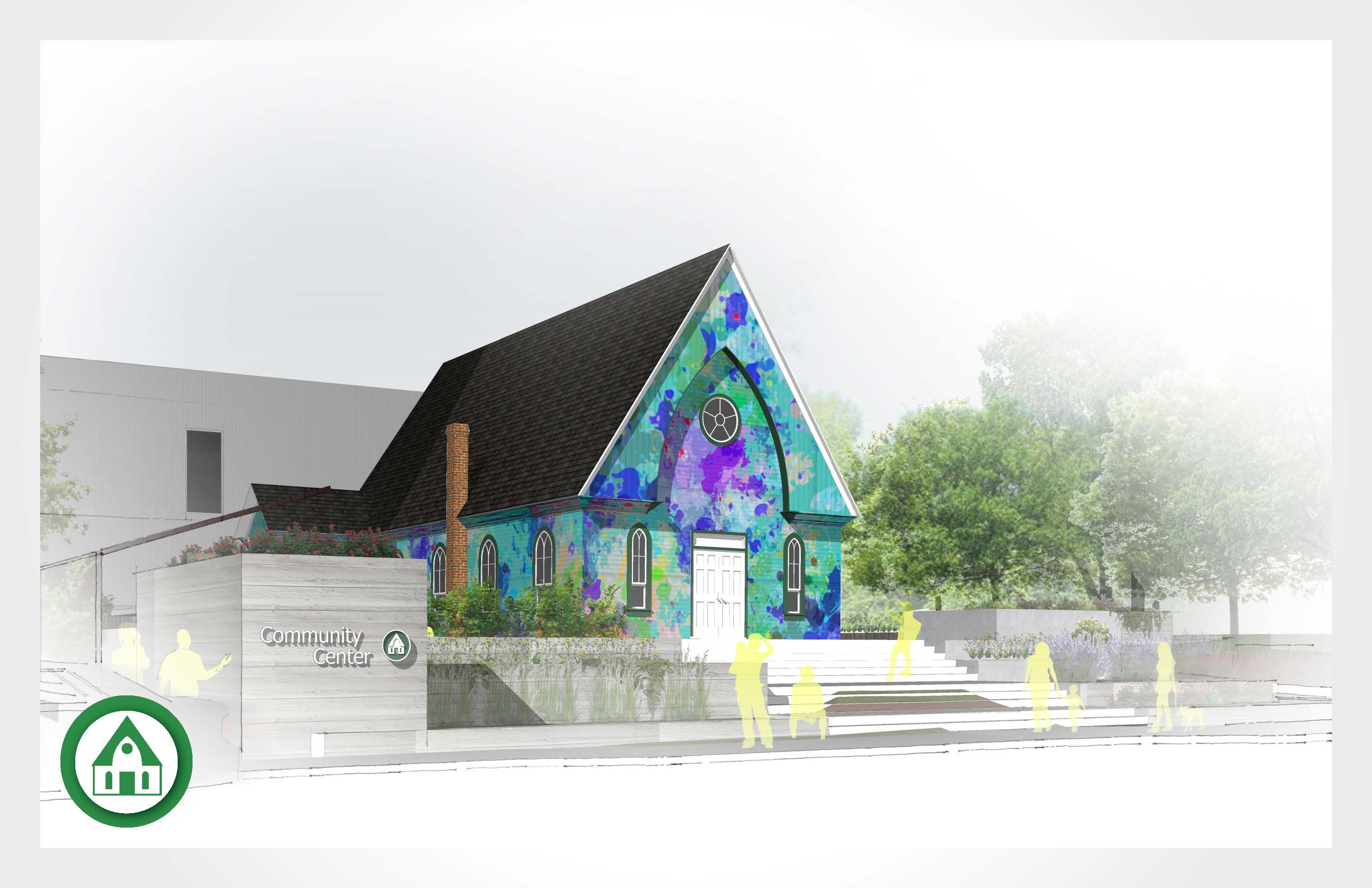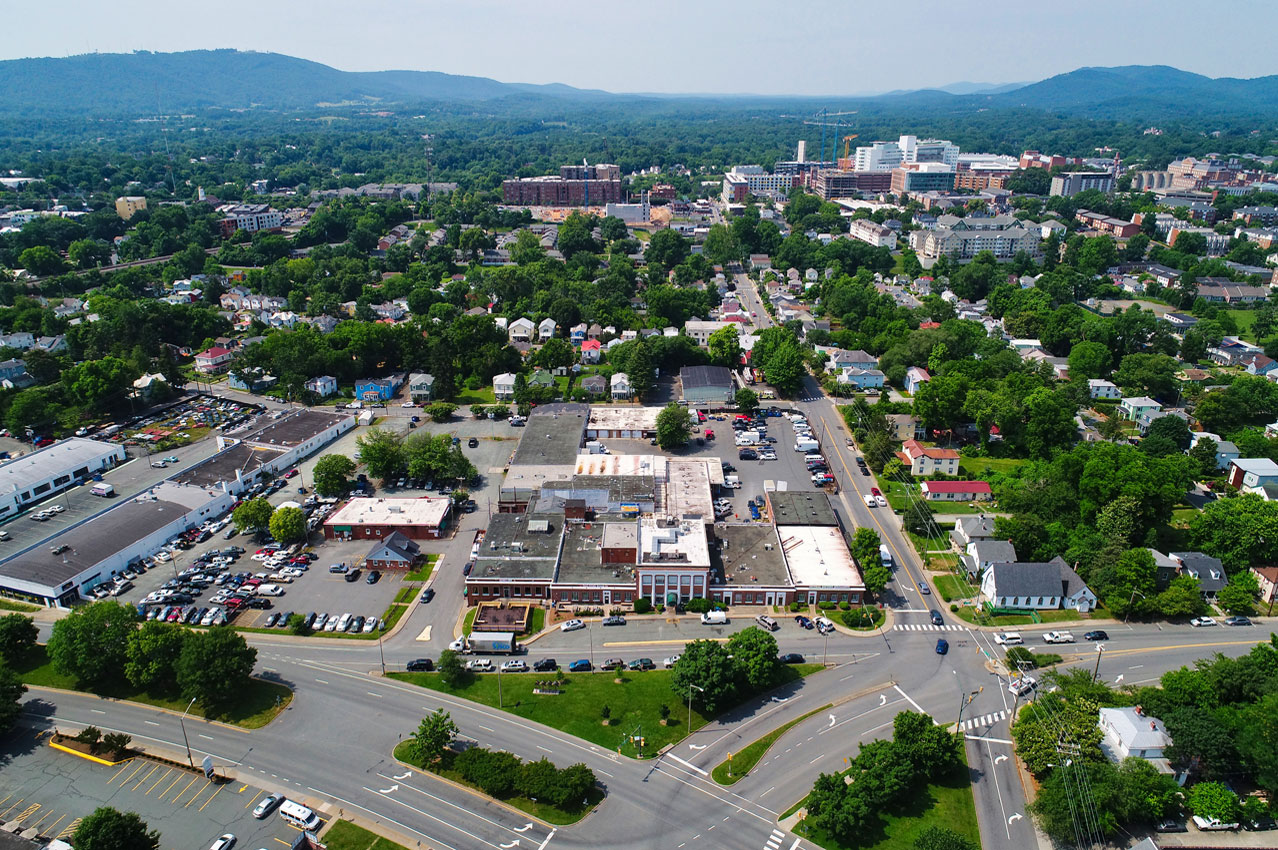AIA Virginia’s Emerging Leaders in Architecture (ELA) program is dedicated to nurturing future architectural leaders. Through an intensive program of educational sessions structured around presentations, discussions, team exploration, collaboration, and case study activities, members of the ELA program hone leadership skills that translate across their careers – ultimately contributing to the advancement of architecture as a profession and as a practice.
Two VMDO employees, Noah Bolton and Tyler Jenkins, participated in the 2018 ELA program. Their culminating design project investigated ways to strengthen the physical and social identity of the 10th and Page neighborhood in Charlottesville. With neighborhoods across the country experiencing the pressures of development and social disconnection, participants in the program wanted to create an example of healthy, additive development, specifically in a place with a legacy of encroachment from private development and university sprawl.

“The residents of the City of Charlottesville are no strangers to the dissolution of neighborhoods,” states the design project’s mission. “Despite economic growth, the City has historically left African-American families isolated and alienated by dismantling their homes, businesses, and gathering places … This project intends to contribute a catalyst for strengthening the physical and social identity of the 10th and Page neighborhood by introducing a counterweight to the surrounding growth.”
Over an eight-month period of interviews, work sessions, and community meetings involving local business owners, residents, developers, and politicians, the ELA group investigated ideas for contributing meaningful and thoughtful development to the neighborhood – including reimagining an abandoned church as a community center. Noah and Tyler offer their reflections on the ELA program and what they learned through their design work for and with the Charlottesville community.

1. What have you learned about design, architecture, and community engagement from the ELA program? Did you learn anything that surprised you, or that you didn’t expect to discover?
Noah Bolton:
A large part of the ELA experience is learning to come together with 15 or so other young architects, that you don’t know and learn to work together as a team to try to develop an idea that you hope will have a positive impact on a community. You have to learn each individuals’ strengths and work as a team to build consensus around a single idea. Before we could really engage the community we had to first figure out how to work together. I think that process alone taught us a lot about how to work with a community and learn from the people of that community in order to come together and design.
Tyler Jenkins:
After going through the ELA program, I learned that we, the ELA Group, were as much the final project as our work in Charlottesville. Each individual was chosen to form a team that has never worked together to address issues in a Charlottesville neighborhood that has gone through its own tests throughout the years. The process of learning about each other and our strengths and weakness as well as discovering how to come together to address concerns within a community was one of the biggest challenges, surprises, and rewards of the program. It is through teamwork that we were able to engage a community facing growth all around it and propose several interventions that would help sustain the sense of community in the neighborhood.
2. Did this project’s focus on the 10th and Page neighborhood in Charlottesville have special meaning to you? In what ways did the project offer place-based connection or awareness?
Noah Bolton:
The fact that I knew the project for this year’s ELA was going to be in Charlottesville carried a huge weight in my applying to participate in the ELA program. While working at the now defunct CCDC (Charlotteville Community Design Center), I had the opportunity to work with kids who lived in the Westhaven Community in an effort to turn them on to design and give them tools to shape their future community. Since that project ended, I had been looking for an opportunity to re-engage in some meaningful way. The project allowed me the opportunity to explore – and really just begin – to understand the complex histories and systems at work that go into shaping a neighborhood like 10th and Page. It was a way to connect with a neighborhood and community that I don’t normally spend time thinking about and using design as a way to strengthen the community I live in.
Tyler Jenkins:
The project’s focus on the 10th and Page neighborhood brought to my awareness an area in Charlottesville that I have always been around (through growing up in the Charlottesville area, attending the University of Virginia, and now working in Downtown Charlottesville) yet never experienced. Throughout the year, we were able to visit and get to know various people living and working in the area and understand how they are working to support those that live there. The process revealed a vibrant group of individuals who are working to maintain and protect a neighborhood they love from the expansion of University housing, commercial building along West Main Street, and the development along Preston Avenue.
3. How has the project affected how you think about the neighborhood scale? In your opinion, how can design can be used to counter systemic disempowerment and dissolution of neighborhoods?
Noah Bolton:
This is main issue I think our group really grappled with. We felt like it was important to be honest about who we were and where we were coming from. We were a group of Architects looking to use design to help empower and enable meaningful growth and change in a neighborhood that is being threatened by development and a City that doesn’t seem to care about preserving its unique places and people. We felt the best way to do that was to engage as many people in the process as possible. This meant talking to the people that live in the neighborhood, but also politicians, developers, and other business people. Design could only be a tool of positive change in this situation it you have everyone at the table and buying into it.
Tyler Jenkins:
A neighborhood is the sum of its parts. Design can only achieve success if the people of the neighborhood buy into the options proposed by the designers. This is what we learned from our ELA experience. It is only through getting into a neighborhood and trying to connect with people and seeing what they really want that you’re able to effectively address neighborhood issues through design.Through meetings with the neighborhood association, politicians, residents, businesses, and non-profits, we were able to propose design interventions and address concerns that were proposed to our team.
Aerial of Charlottesville © Skyclad Aerial

